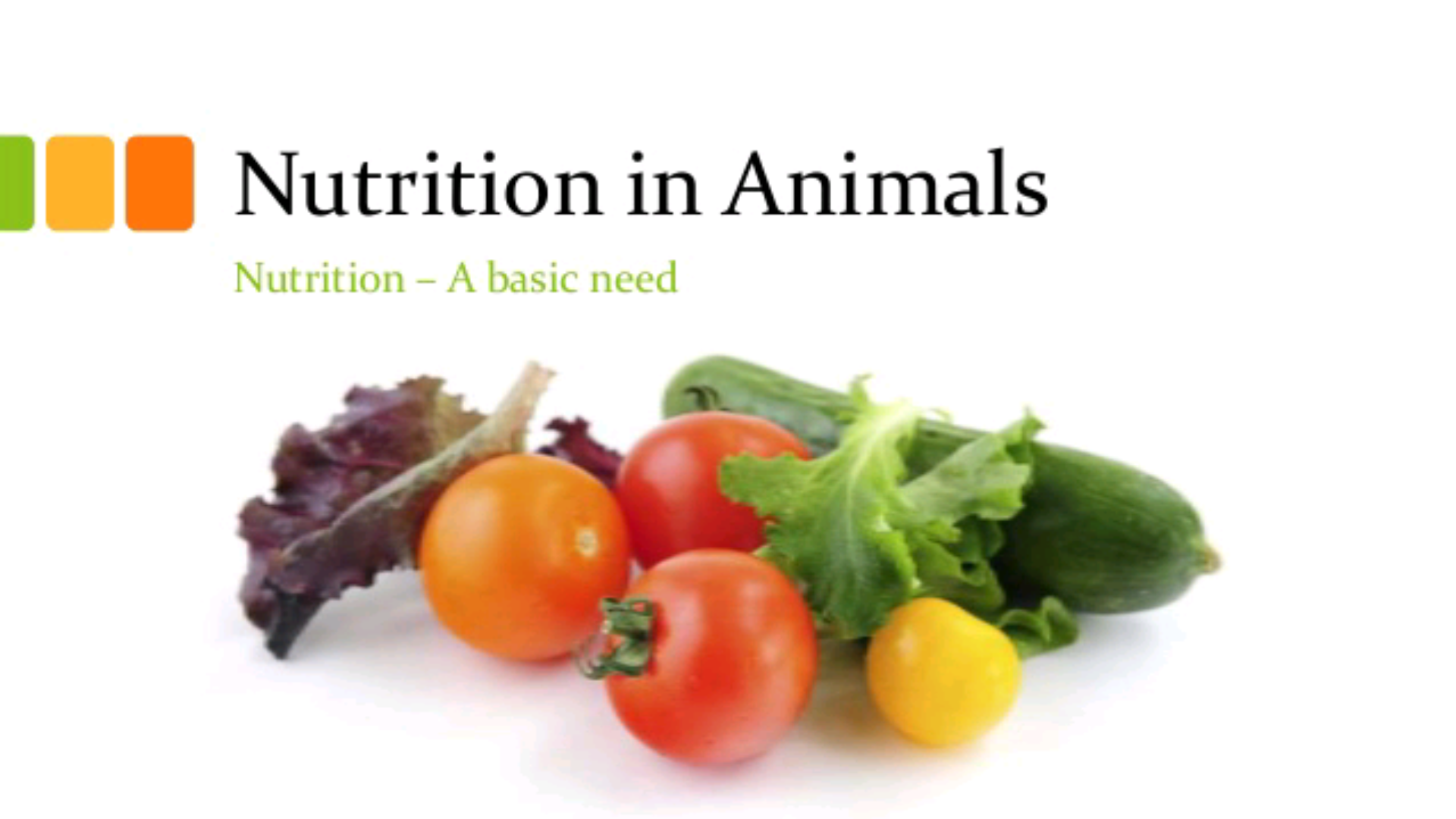
About Lesson
2.1 Different Ways of Taking Food
Animals have various modes of taking food into their bodies. For example, bees and hummingbirds suck nectar from plants, while human infants feed on mother’s milk. Snakes like the python swallow their prey whole, while some aquatic animals filter tiny food particles from the water.
2.2 Digestion in Humans
Digestion in humans begins in the mouth, where food is chewed and mixed with saliva. The process of taking food into the body is called ingestion. From the mouth, food passes through the esophagus into the stomach, where it is churned and mixed with digestive juices. The stomach releases hydrochloric acid and digestive juices that break down proteins.
The small intestine is where most of the digestion and absorption of nutrients occur. It is highly coiled and receives secretions from the liver and pancreas. Bile, produced by the liver, helps in the digestion of fats, while pancreatic juice acts on carbohydrates, fats, and proteins. Villi, finger-like projections in the small intestine, increase the surface area for absorption of digested food.
In the large intestine, water and some salts are absorbed from the undigested food, and the remaining waste is expelled as feces through the anus.
2.3 Digestion in Grass-Eating Animals
Grass-eating animals, like cows and buffaloes, have a unique digestive system that allows them to digest cellulose. They quickly swallow grass, store it in a part of the stomach called the rumen, and later regurgitate it to chew it again. This process, called rumination, helps in the digestion of cellulose by bacteria present in the rumen.
2.4 Feeding and Digestion in Amoeba
Amoeba, a microscopic single-celled organism, feeds on microscopic organisms by engulfing them with pseudopodia or false feet. Digestive juices are secreted into food vacuoles, where food is broken down into simpler substances. The absorbed substances are used for growth and maintenance, and undigested residues are expelled from the cell.
Main Steps of Nutrition in Humans
-
Ingestion: The process of taking food into the body through the mouth.
-
Digestion: Breakdown of complex food molecules into simpler forms that can be absorbed.
-
Absorption: The uptake of digested nutrients by the cells of the body.
-
Assimilation: Incorporation of absorbed nutrients into the body’s cells and tissues for growth and repair.
-
Egestion: Elimination of undigested waste material from the body through defecation.
The Largest Gland in the Human Body
The liver is the largest gland in the human body.
Components of Digestive Juices
-
The stomach releases hydrochloric acid and digestive juices composed of enzymes that break down proteins.
-
The liver produces bile, which is stored in the gall bladder. Bile helps in the digestion of fats.
-
The pancreas secretes pancreatic juice containing enzymes that act on carbohydrates, fats, and proteins.
Finger-like Outgrowths in the Small Intestine
Villi are finger-like projections present in the inner lining of the small intestine. Villi increase the surface area available for absorption of digested nutrients into the bloodstream.
Location and Function of Villi
Villi are located in the small intestine. Their function is to absorb digested nutrients from the food in the small intestine into the bloodstream.
Production of Bile and Its Function
Bile is produced by the liver. It helps in the emulsification and digestion of fats in the small intestine.
Type of Carbohydrate Digested by Ruminants but Not by Humans
Ruminants can digest cellulose, a complex carbohydrate found in grass. Humans lack the necessary enzymes to digest cellulose efficiently.
Instant Energy from Glucose
Glucose is a simple sugar that can be rapidly broken down by cells to release energy through cellular respiration.
Parts of the Digestive Canal Involved in Various Functions
-
Absorption of Food: Small intestine.
-
Chewing of Food: Mouth and teeth.
-
Killing of Bacteria: Stomach (due to its acidic environment).
-
Complete Digestion of Food: Small intestine.
-
Formation of Faeces: Large intestine.
Similarity and Difference Between Nutrition in Amoeba and Human Beings
-
Similarity: Both amoeba and humans undergo processes of ingestion, digestion, absorption, assimilation, and egestion.
-
Difference: Amoeba is a single-celled organism that performs these processes within its cell, while humans have specialized organs and systems for digestion and nutrient absorption.
-
Join the conversation
